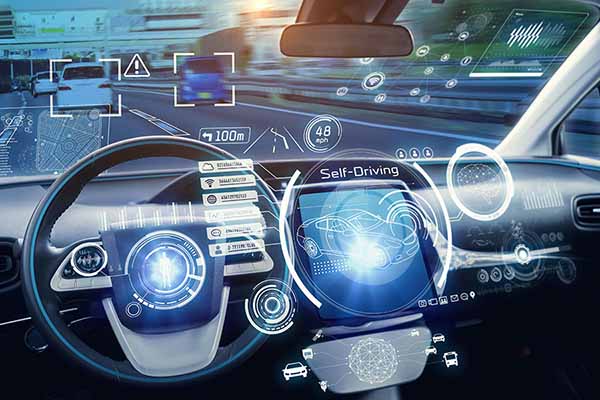Most passenger vehicles today incorporate driver assistance technology, which relies on artificial intelligence (AI) to detect if a driver is sleepy or fatigued by monitoring their eyes. AI systems also learn a driver’s behavioral pattern, including preferred temperature settings, songs, and destinations, to make the commuting experience convenient and comfortable. Almost all major automotive companies are working with software providers to create an ideal interior atmosphere for the driver, leading to an engaging and individualized user experience.
It is little wonder, then, that the automotive artificial intelligence market is expected to grow at a CAGR of 24.1% between 2022 and 2027. MarketsandMarkets values the automotive artificial intelligence market at USD 2.3 billion in 2022, and projects it to reach USD 7.0 billion by 2027, based on the growing adoption of ADAS technology by OEMs and the rising demand for enhanced user experience and convenience features.
Based on technology, the automotive artificial intelligence market has been segmented into deep learning, machine learning, computer vision, natural language processing (NLP), and context-aware computing. Deep learning is the primary technology adopted by companies in human-machine interface (HMI), semi-autonomous, and autonomous driving applications, making it the leading segment of the automotive artificial intelligence market.
Machine learning (ML)—which allows cars to analyze and learn from different driving situations, thereby reducing accidents and making cars safer and more efficient—is expected to hold the second-largest share of the automotive artificial intelligence market during the forecast period. ML also creates accurate models that can guide future actions and identify patterns at a scale not previously achievable. Machine learning has various technologies, namely supervised learning, unsupervised learning, deep learning, and reinforcement learning, that are particularly applicable when powering a system with new insights within the auto industry, as the data sets are large, diverse, and change quickly.
Latest developments in the field of automotive AI offer in-car payments designed to revolutionize how customers refuel, pay for parking or tolls, or even do their grocery shopping. Open Banking allows clients to pay for various amenities directly from their bank account, reducing friction and security risks. Clients can also use Open Banking’s services to implement in-car wallets and payment systems, providing a seamless consumer experience while reducing the need for third-party payment networks. The rapid expansion of in-car payments is also expected to fuel natural language processing and deployment of voice assistants in automobiles, using AI.
On the flip side, the increasing demand for enhanced user experience and convenience features has led to an increase in the number of electronic systems installed in a vehicle, consequently increasing the cost of the vehicle. Earlier, electronic systems accounted for around 1–2% of a vehicle’s total cost, which has risen to almost 8–12%, especially in luxury and premium cars that feature advanced technologies. Unfortunately, the demand for luxury and premium cars is moderate due to their high price, which is likely to dampen the overall growth of the market.
Another major challenge seen especially with driverless automobiles is the effect of inclement weather on sensors, leading to impaired vision. Driver safety may be at risk since the accuracy of sensors is significantly influenced by adverse weather. However, technological developments are expected to help overcome this eventually, allowing completely autonomous vehicles to operate in all kinds of weather.
Also, for autonomous cars to be effective, the infrastructure must support the technology. For instance, lane assist technology requires lane lines on the road for the system to sense and adjust vehicle position, increasing the infrastructure development cost. Furthermore, the installation of advanced features such as blind spot detection (BSD), lane departure warning (LDW), adaptive cruise control (ACC), and forward collision warning system (FCWS) increases the overall cost of the vehicle. While cost is not a focal area for premium cars, the demand for small and medium segment cars is affected by the cost of the vehicle, leading to automakers trying to provide efficient safety features at reasonable prices.
As the technology develops and matures, AI in the automotive industry will become more capable than ever, enabling vehicles to perform tasks previously thought unachievable. Some of the leading players working to change the face of modern cars and how we perceive them include globally established players such as Nvidia Corporation (US), Alphabet Inc. (US), Intel Corporation (US), Microsoft Corporation (US), IBM Corporation (US), Qualcomm Inc. (US), Tesla Inc. (US), BMW AG (Germany), Micron Technology (US), and Xilinx Inc. (US). As we inexorably move towards an increasingly automated future, it will be intriguing to witness how consumers benefit from the immense opportunities artificial intelligence is expected to create in the automotive sector.














